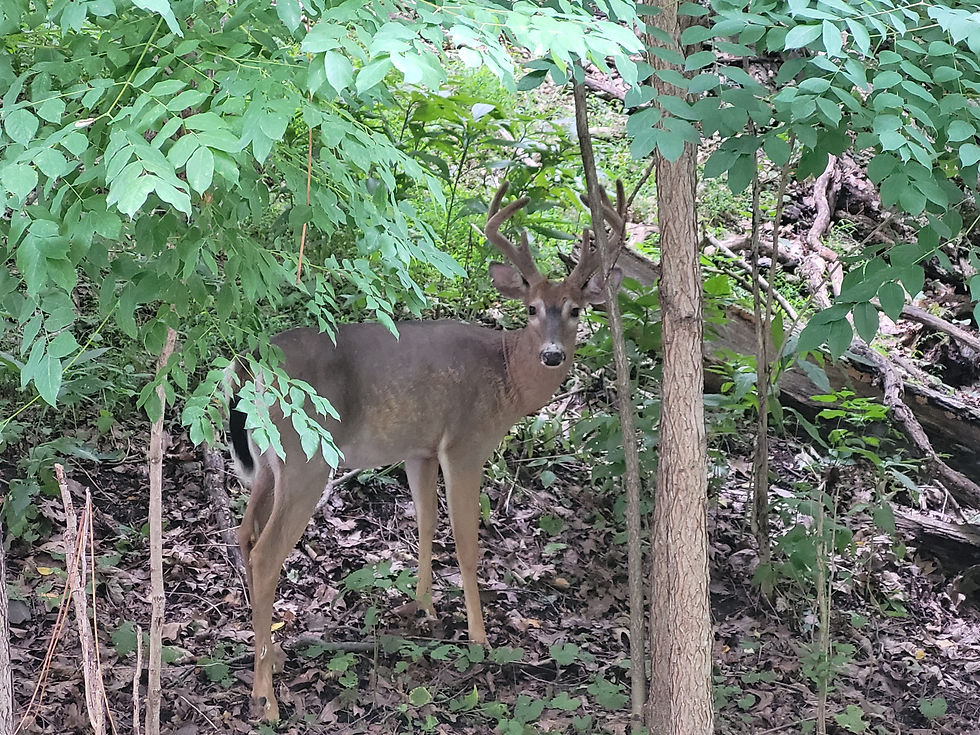Ramps, an endangered Appalachian springtime delicacy | The Homepage
- jmartinez5135
- Mar 1, 2022
- 3 min read
By Matt Peters

*Editor's note: This article is a finalist for the 2023 Golden Quill award for Excellence in Written Journalism.
After a long cold winter, the first fresh vegetables of the season are as much a treat as the warmer temperatures and longer daylight hours. In our Appalachian forests one of the first spring greens is a relative of the garlic family known commonly as Ramps. Also called bear-leeks, this unassuming little plant plays an outsized role in both mountain culture and mountain ecology. Ramps produce a set of leaves shaped like rabbit ears in the early Spring before the trees leaf out, taking advantage of the short window of time when sunlight reaches the forest floor. A whole class of plants called “spring ephemerals” occupy this ecological niche, in a frenzy of growth over a few short weeks to produce enough energy, stored in their roots, to make it to the next season.
Many of these plants, including the lovely Trillum (PA’s state flower), are perennials, and a single specimen might be decades old. Their diminutive size and brief aboveground appearance belies their ecological importance, however. Their rapid growth happens when soils are most unstable, having suffered cycles of frost and thaw followed by heavy spring rains which threaten to wash away nutrients. But these plants absorb those nutrients, store them briefly in their leaves, and then return them almost immediately for the benefits of their summer-green neighbors and even the tall trees themselves. Without this “nutrient dam” our rich forest soils would be denuded and unable to support the rich biodiversity that makes our Appalachian forests so special. Ramps are also a life-saver for mountain people, who rely on these early spring greens after a long winter’s privations. Like garlic, which was one of the very first plants domesticated by humans for agriculture some ten thousand years ago somewhere in the mountains of what is now Iraq or perhaps Turkey, ramps are a wonderful tonic for cleansing the blood and organs of accumulated toxins. The strong odor associated with ramps came with a social cost, however, as class snobbery would shun those reeking of ramps as “poor hillbilly folks” unable to afford more “genteel” fare.
Today this heritage is celebrated with weekend festivals featuring the humble ramp. Restaurants throughout the region offer menu specials during the brief season they are available. But we are in danger of loving ramps to extinction, as unscrupulous collectors take the whole plant, roots and all, while we lose acre after acre of forest habitat to logging, coal mines, urban sprawl, new highways, and other destructive human activity. Responsible ramp collectors know to take only the leaves, and some even help ensure the future of the plant by helping spread the seeds to establish new patches. Ramps are very slow-growing, with an individual plant taking ten years or more to mature enough to flower. This, combined with its growing popularity as a culinary novelty, means that there is basically no such thing as “sustainable” harvest of the root bulb.
On my own property here in Hazelwood I have been able to rescue ramps that were harvested whole, all too often with young immature roots as slender as a pencil, and return them to the forest soils to continue their cycle of growth and I have been rewarded with seeing them mature to flower and seed and form new individuals. But the process is painstakingly slow, and observing this has given me an appreciation of the need for conservation of this valuable species. Our Appalachian forests are home to an abundance of biodiversity that can feed us, heal us, delight us, and inspire us. But these forests need our help! European colonization and the industrialization of society has broken the connection between humans and the habitat that sustains us, and a growing awareness of the impacts of climate change is a light too dim yet to see the consequences of our actions.
Hazelwood is blessed with an abundance of forests that we take for granted, or even scorn as “waste places”. We are taught to fear the forests that are our natural home, and in our fear, we are willing to trade the richness of this ancient biodiversity for a scant paycheck as ephemeral as the spring flowers of the forest.
Matt Peters is the editor of Heartbeat, published by Heartwood, and a Hazelwood resident.

.png)




Comments